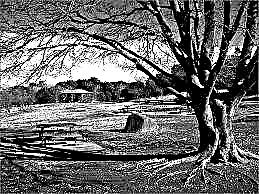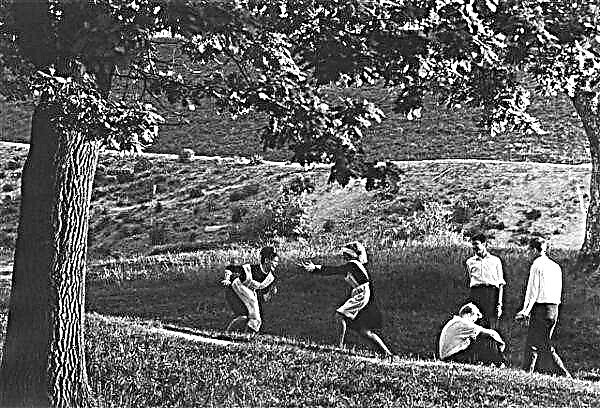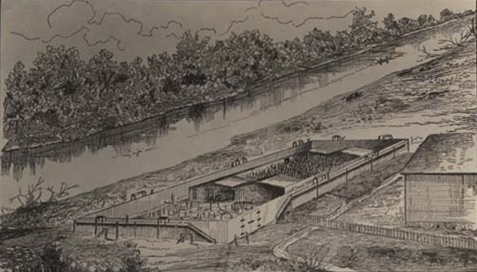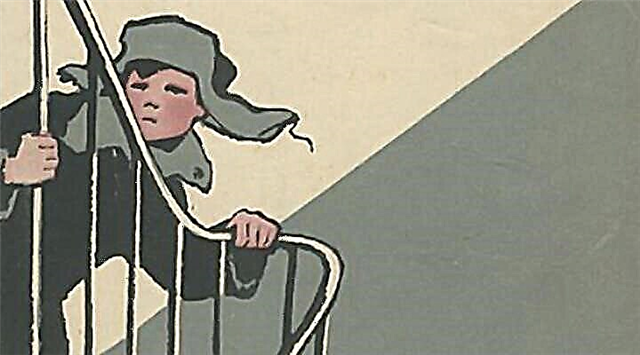For creativity A.I. Kuprina is characterized by special attention to the concept of love. What is true love? What is it like? The same story is dedicated to one of the types of love - between husband and wife. Therefore, it seems to give the reader the opportunity to think about what family relationships can be called deep, sincere, and what are they based on.
History of creation
“Lilac bush” - the story of A.I. Kuprina, written in 1894 and published in October of that year in the journal Life and Art. It refers to the early prose of the author. A great thematic diversity and a humane, sensitive attitude to the heroes are characteristic of the pen’s test of this writer.
The work immediately pleased the reviewers and ordinary readers. It can be said that it made the author a name in the literary world. Not surprisingly, the writer began his career with a description of human virtues. Only then did he begin active journalism, which brought him to the bottom of the social. The plots of that period no longer pleased the audience, but embarrassed it.
The meaning of the name
Why did Kuprin name his story that way? The image of lilac is not once found in Russian literature and, in particular, in prose. So, in "Spring Waters" I.S. Turgenev's lilac symbolizes the emerging love and at the same time separation, just as in the novel by I.A. Goncharova's “Oblomov” associates the beginning of the relationship between Oblomov and Olga with a lilac branch, and the same image correlates with the separation.
In the story of A.I. Kuprin’s image of lilac is also associated with a love theme: it symbolizes true marital affection and love, sincere participation and mutual assistance, which is the main problem, the semantic center of the work. In addition, this bush means the beginning of spring, and in the context of the work indicates that the couple did not cool to each other, on the contrary - a wonderful time has opened in their relationship, where mutual warmth revives everything around.
Genre and direction
Story A.I. Kuprina “Lilac bush” refers to the method and direction of realism. Kuprin is one of the most famous representatives of this trend in Russian literature. His works are distinguished by very vivid and detailed descriptions of everyday life (daily conversations, events), filled with a sense of a living participation in them of the author-narrator.
In a story, as a rule, one or several events of the life of a hero or heroes are depicted, one storyline is highlighted - these features are characteristic of the work “Lilac bush”, and therefore, we can define it as a story (the plot is built around how Vera and Nikolai Evgrafovich solve the problem of passing the exam).
Composition
Compositionally, the work can be divided into three parts:
- The return of Nikolai Evrgafovich from work and a message to his wife about the failure;
- Energetic help of Verochka to her husband - all sorts of efforts to rectify the situation;
- A happy ending - Vera meets Almazov again, and he tells her the good news about success.
Such a composition is called a mirror composition: both at the beginning and at the end of the story, Vera’s husband returns with news from work.
About what?
The story "Lilac bush" about conjugal love. This topic is revealed in the relationship between Vera and Nikolai Evgrafovich. So, Verochka takes a passionate part in everything that happens in the life of her husband. She constantly supports him, denies herself everything, even necessary, for the sake of his success. So, a woman lays her jewelry in order to get money for a gardener who could plant bushes so that the husband passes the exam. The fact is that he accidentally planted a blot on the drawing, and instead of it, in order not to redo it, painted a bush. The professor was angry and did not count the work, because he knew the area by heart. But the heroine planted a lilac in that place, and the embarrassed teacher, seeing him, changed his assessment. At the end of the story, happy spouses laugh and share with each other their joy, mutual love. In this short episode, revealing the essence of the story "Lilac Bush", the writer showed a recipe for getting rid of life's problems. Alone, a person has a hard time, he loses faith in himself, but in marriage he acquires not only emotional affection, but also a faithful ally in the person of a lover or lover. The main thing is to learn to put common interests above personal ones.
The other side of the story is the theme of life values. For Verochka and her husband, this is love, prosperity, mutual understanding. Professor Nikolai Evgrafovich, for example, is shown as a person who has devoted himself, all his life to his beloved work.
The main characters and their characteristics
- Nikolay Evgrafovich Almazov - A young poor officer, who only the third time entered the Academy of the General Staff. All exams were given to him very hard, they cost a lot of work. He is described as a strong man, but failure at the last exam hit his composure very hard, and he was so upset that he wanted to almost cry from resentment. In difficult times, he listens to his wife, does not resist her desire to help, fulfills her short assignments.
- His wife supported him in everything Verochkacapable of deep sympathy, able to take on the role of head of the family in difficult times, resolve a difficult situation, become a peacemaker.
So, she turned to her husband very carefully and affectionately, her quick decisive actions were caused by sincere concern about the spouse’s state of mind, his possible future failure.
Topics
The main themes of the story, closely related to each other, are love and happiness. What is true love? Is happiness in it? The true feeling is based on mutual trust, on the ability to sacrifice for the sake of a loved one, on the ability to understand the pain and joy of a loved one, and in possessing it can be real happiness, a spiritual and exalted personality. That is why we can call Vera happy: she is capable of such deep love, and her husband cherishes her as much as she does.
The story gives brief descriptions of the details of life, the environment in which the action itself takes place, and the sketches of nature convey a particular sensation at one time or another, such as the silence and beauty of late evening:
When the Almazovs arrived at the gardener, the white night of St. Petersburg had already spilled blue milk in the sky and in the air.
This state of evening peace continues with the fact that at this time people are already returning home to their family
A gardener, a Czech, a little old man in golden glasses, had just sat down with his family for dinner.
Problems
The work raises, first of all, the problem of love and the related problem of happiness. In particular, this is the difficulty of true, sacrificial love, and the ability to sincerely participate, sympathy. This is the lack of fortitude of the main character, and the difficult task on Vera’s shoulders is to take on the role of the main one and solve a difficult situation when a loved one is at a loss.
One way or another, the problems of the work are connected with the moral categories of love relationships between people. What are the properties of true love, and how is it manifested? Is she able to make a person truly happy and spiritually free in her happiness? Moral problems also affected Vera’s husband when he realized his deception and realized that he didn’t do very well with the professor.
Meaning
The main idea of the work is that deep affection, mutual love, trust and respect of spouses are based on the ability to sacrifice oneself for the sake of a loved one, to support, to sympathize - to be near. Life in harmony can be born only if both people treat each other very carefully and with love. It is such a marriage that can make a wife and a husband happy, elevate them above routine and everyday life.
Interestingly, the main idea of Kuprin focuses on the role of women in marriage. It is on her that the weather in the house largely depends. If she did not show proper understanding and only fell upon her husband for lack of attention, then Nikolai would break down completely, and the family would turn into mutual torture. But the support, sympathy and love of Vera, which sacrifices her interests for the good of her husband, saved the situation and helped out a hero who is again ready to conquer the granite slopes of science.
Output
So, the story of A.I. Kuprina “Lilac bush”, representing a certain ideal of marital relations, and it’s completely realistic, inspires the reader with the natural beauty of human feelings: mutual respect, trust, sacrifice, participation. Thus, this ideal, our consciousness can absorb, respectively, rise and get closer to it, understand its essence and unconsciously reach for its beauty.
You need to learn to love. Many people think that this feeling falls off the sky or depends entirely on the mysterious compatibility of hearts, but the writer draws our attention to the fact that he needs to learn, together overcoming difficulties. True love is not a gift, but an achievement to which moral and virtuous people come who are willing to work on themselves to achieve harmony in the family. This is what Kuprin teaches in his story.
Criticism
Story A.I. Kuprin “Lilac bush” I perceived as something very solid, organic, natural. The relationship between Vera and Nikolai Evgrafovich, everyday, seemingly everyday, is described so closely and correctly that it is easy to be fascinated by the mutual friendship and love of the spouses. The impression of the story is a certain example of marital relations that appeared somewhere in my memory, natural, completely close to real life, and at the same time very noble and beautiful.
Contemporaries of the writer took the story enthusiastically. So, IV Terentyev wrote that “the work of A. Kuprin has the healing power of a pure moral source.” In his article, he especially praised the image of Verochka as the most successful discovery of the author.

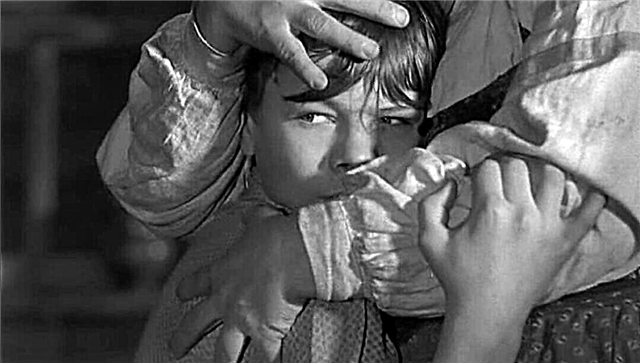
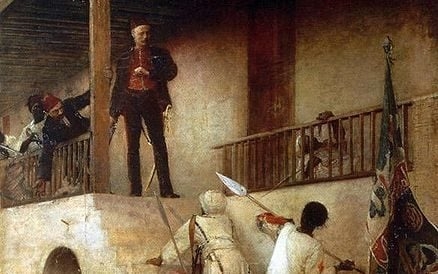
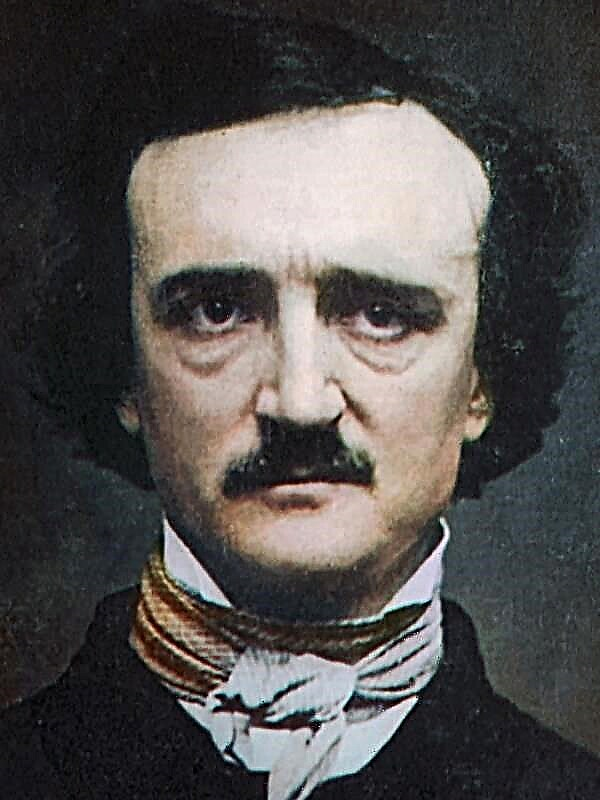
 Peter Pan
Peter Pan
